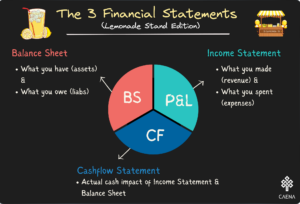Financial modelling can help startups grow and increase chances of success when used as a storytelling, decision making and operational tool
In his book “Mastering the VC Game”, entrepreneur turned VC Jeffrey Bussgang recounts a pitch for a potential investment for his then startup Upromise. He and his co-founder were pitching to Silicon Valley legend, John Doerr, of Kleiner Perkins. All went well until the financial slide when John started shooting questions: “What are the revenue drivers that would bring the break-even point forward?”, “why are gross margins 88% in year four instead of 65% in year two?”. Jeffrey and his co-founder did not have the answers, but luckily that did not cost them the opportunity as they ended up with an investment from Kleiner Perkins.
Founders are by definition battling a lot of competing priorities— building products, fundraising, hiring and other sundries. At some point, usually when raising funds from institutional investors, startups embark on building a financial model. Oftentimes, it is with a tunnel vision of obtaining the investment. Few founders find the time to fully understand the intricacies of the assumptions, business levers and inputs into the financial model.
For Jeffrey and the Upromise team, skimping on the details almost cost them an invaluable VC investment. The consequences are much more severe for lots of other startups. Apart from the complexity traditional financial modelling entails, there are two distinct but related issues most startups have with financial models (i) how to use a model and (ii) when to build one.
How to Use a Financial Model
There is a common sentiment that financial modelling is pointless because the numbers will always be ‘up in the air’. After all, startups are making broad assumptions about markets that are likely to change dramatically depending on several factors. This sentiment misses the point completely. Like every tool, the usefulness of a financial model depends on how it is deployed. Startups can use financial model as a tool to growing and scaling in three ways.
- Storytelling: when investors ask for financial models, the main reason is not to evaluate the numbers — they will but there is a bigger purpose. Rather, they are giving startup founders an opportunity to tell their story using data. Secondly, it is an opportunity for founders to demonstrate a very good understanding of their industry, what it takes to compete and win.
One red flag for investors is when founders do not understand that a financial model is a continuation of the pitch deck. It is easy to show a slide with total addressable market (TAM) running into billions of dollars. Effective storytelling demonstrating how the “massive potential” sold in the market sizing slide can turn into customers and revenue. Similarly, the story told in the competitive landscape slide in the deck must be reflected in assumptions such as market share and cost structure.
- Decision making: do you think startups face so much uncertainty that they shouldn’t use financial models? Try complex projects such as airports or power plants. Like startups, they are starting from a standing start but unlike startups, investment options are thoroughly evaluated before decisions are made. Project Finance involves using financial models to inform “go or no-go” decisions — “what does the model say?”
Startups can benefit from using financial models to make more precise, data-driven decisions. Can you afford that new hire? Is the market big enough for you to build a sustainable, profitable business? The answer is in the model — “what does the model say?”
- Budgeting and planning: when you’ve used your model to tell your story and sell your business to stakeholders… and have developed the habit of plugging in numbers before making significant decisions… a third and probably the most important use of a model for any company is as an operational tool. A financial model is “the heart of any good business” is the way an experienced startup founder described it to me. This involves making plans (ideally monthly) and then reviewing them regularly to know whether you’re on track, what’s working and what needs improvement.
10,000 dollars: the highest amount a startup founder told us they paid for a seed stage financial model
One month: the time taken to receive the first draft of the said 10k model
When is the Right Time to Build your First Financial Model?
This is pretty straightforward — on day zero. Every smart entrepreneur would make basic back-of-the-envelope calculations before quitting their job and sinking hard earned savings into their idea. This first, quick and dirty “model” — yes that is what it is should then scale as the company grows.
- Day zero: very basic calculations based on initial assumptions around market sizing and revenue.
- Pre-seed stage: more detailed and refined assumptions around market sizing, value drivers, unit economics and basic metrics
- Seed stage: the financial model starts to look more robust and assumptions are less “pie in the sky” as the startup now has some initial traction and validated previous assumptions
- Series A to exit (M&A or IPO): at the extreme end of the spectrum here, the financial model becomes a double edged sword. Investors, acquirers, bankers or similar capital providers will hold a company to the promises in the company’s financial model. Loan covenants, warranties, indemnities, dividends and other terms are often linked to the financial model
All of the clients I dealt with as a banker had the resources to build a detailed financial model. Unfortunately this is not the case for most startups. This is one of the motivations for founding Caena — the opportunity to leverage technology to make financial modelling and other tools that large companies use to improve their business outcomes more accessible to startups.
Caena — redefining fundraising for startups
We believe founders should own their story and so we have built a user-friendly tool. Everyone, regardless of their background, can build financial models for their business. With our platform you can build a financial model in less than 30 minutes (incl. full projections, charts, and key metrics), without the use of spreadsheets and complicated formulas.
To try Caena for free, sign up below:





